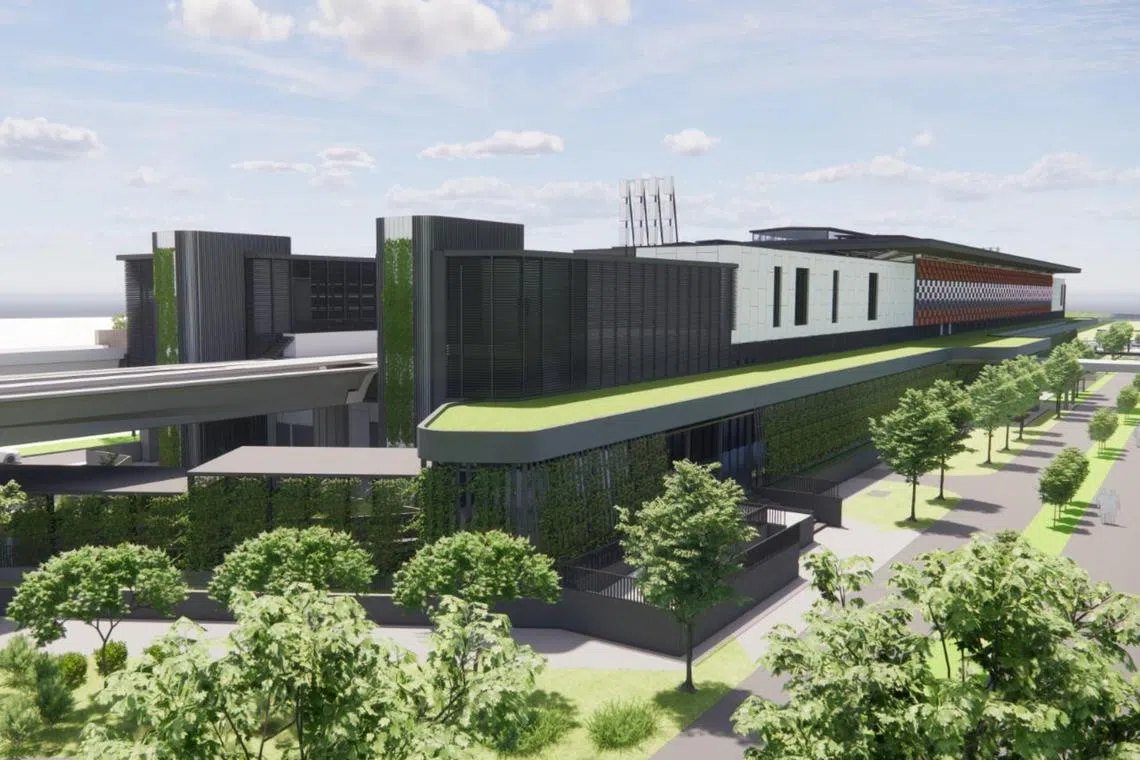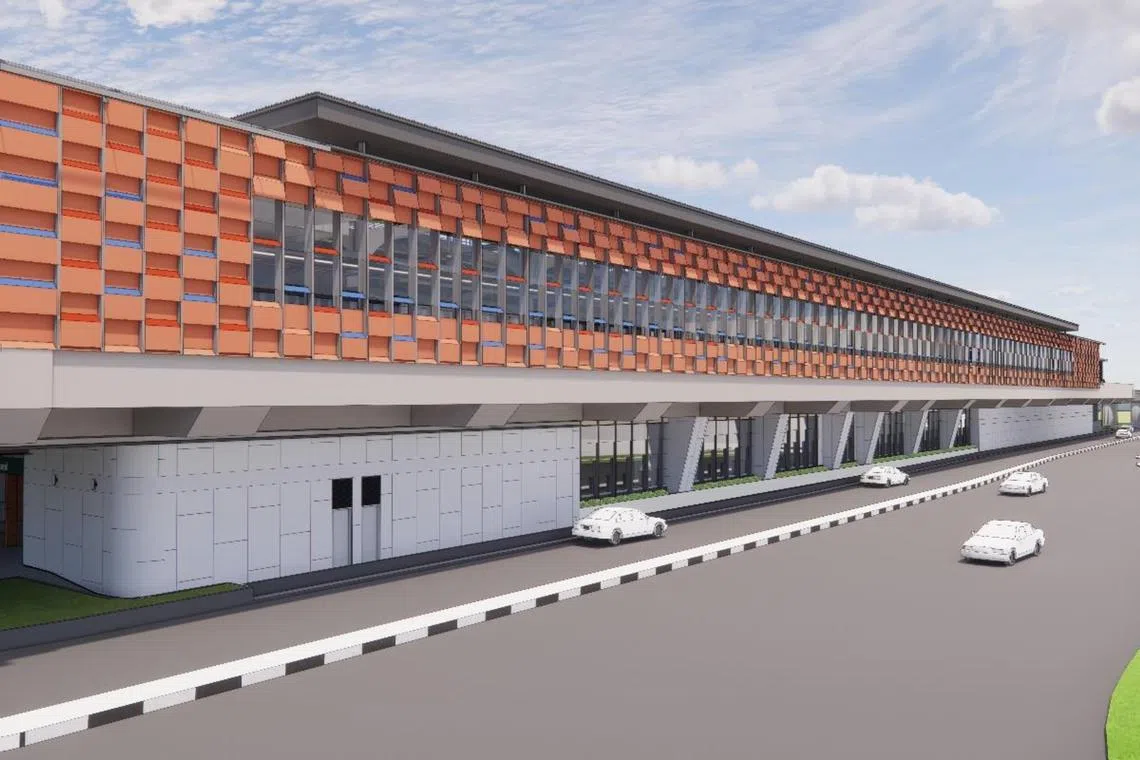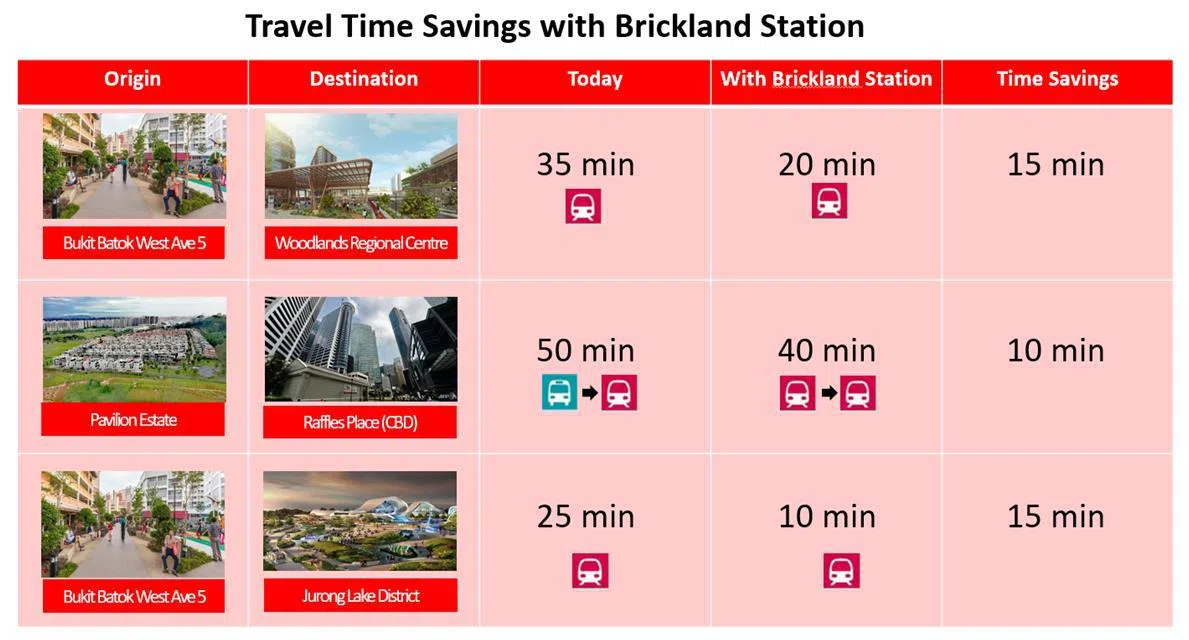New Brickland MRT stop between Choa Chu Kang and Bukit Gombak set to open in 2034
Sign up now: Get ST's newsletters delivered to your inbox

The Land Transport Authority said that design and construction work on Brickland station is expected to start in 2024 and finish in 2034.
PHOTO: LTA
Follow topic:
SINGAPORE – The new Brickland MRT station, between the existing Choa Chu Kang and Bukit Gombak stops on the North-South Line (NSL), is set to open in 2034.
This means residents of Keat Hong, Bukit Batok West, Pavilion Park and the Brickland district in the future Tengah town will be within a 10-minute walk of the station when it is ready. The first homes in the Brickland district are scheduled for completion by the end of 2027.
The Land Transport Authority (LTA) said on Friday that design and construction work on Brickland station is expected to start in 2024 and finish in 2034.
The station will take longer than usual to build because it was not planned for during the 1980s, when the NSL was built.
A viaduct and crossover tracks will have to be built so that modification work can be done on the NSL’s existing tracks. This will minimise disruption to rail operations, LTA said.
When completed, Brickland station will allow more direct rail access for those at nearby educational institutions such as ITE College West, Swiss Cottage Secondary School and St Anthony’s Primary School.
Right now, the NSL has 27 stations, and runs from Marina South Pier to Jurong East.
With the new station, commuters travelling from Bukit Batok West Avenue 5 to Woodlands Regional Centre or the Jurong Lake District could shave 15 minutes off their train journeys.
Commutes from Pavilion Estate in Bukit Batok to Raffles Place via public transport are also expected to be cut from 50 to 40 minutes in future.
The authorities announced plans to build Brickland station in 2019
It is a key part of LTA’s vision of creating a “45-minute city” and “20-minute towns”. The “45-minute city”, for example, aims to keep most peak-period journeys between homes and workplaces within 45 minutes.
In May, LTA put up a pre-qualification tender for the design and construction of Brickland station as well as its associated viaduct. It closed on June 28 with 18 bids.
Brickland will be the third MRT stop built on an existing elevated rail line here – otherwise known as “infill stations”.

Brickland will be the third MRT stop built on an existing elevated rail line here - otherwise known as “infill stations”.
PHOTO: LTA
It comes after the East-West Line’s Dover station, which opened in 2001, and NSL’s Canberra station, which started operating in 2019. Dover station took around three years to build, and the Canberra stop took about four years.
Construction on a fourth infill station is under way. Hume station, located underground between the Beauty World and Hillview stops on the Downtown Line, is expected to open in 2025.

As Singapore’s MRT network expands, there will be more such infill stations in the pipeline.
These include a future Sungei Kadut station on the NSL and Bukit Brown station on the Circle Line.
Ms Low Yen Ling, mayor of the South West District and MP for the Bukit Gombak division of Chua Chu Kang GRC, said on Facebook that most of the construction work for Brickland station can be done only after NSL services have stopped.
This means LTA has about three hours daily for construction, she added.
In response to The Straits Times’ queries, LTA said Brickland station would be built over the existing NSL viaduct between Choa Chu Kang and Bukit Gombak stations.
But because the new stop was not planned for when the NSL was built, more modification and engineering works have to be done on the existing tracks.
For example, turnouts – points where trains switch from one track to another – need to be built.
Hence, a new viaduct is needed to allow trains to pass through the area where the modifications will happen.
This is unlike Dover and Canberra stations, which were planned. The necessary engineering provisions were hence already in place, LTA said.
“Given the complexity of the works and site constraints, the total design and construction duration would take approximately 10 years.”
Speech-language therapist Agnes Koh, 28, and her husband, Mr Koh Tiang Lip, 30, see the potential benefits the new MRT station will bring as it will be closer to their home than Bukit Gombak station, which they currently use.
However, the couple, who moved into a flat in Bukit Batok West Avenue 5 about a year ago, also said that a lot can change in the next 11 years.
“Assuming that we remain in the same jobs, the new Brickland station will definitely benefit us by significantly reducing the duration of our daily commutes to work. It would also make our place more accessible to our friends and family,” Mrs Koh said.
She and her husband both take public transport almost daily, and their commutes currently take about an hour each way.
The couple added: “We look forward to more amenities that may come along with the new station, such as retail stores, eateries and bus services.”
They said: “Realistically speaking, our future children will probably benefit the most... It would also be easier for us to consider school options for them.”



